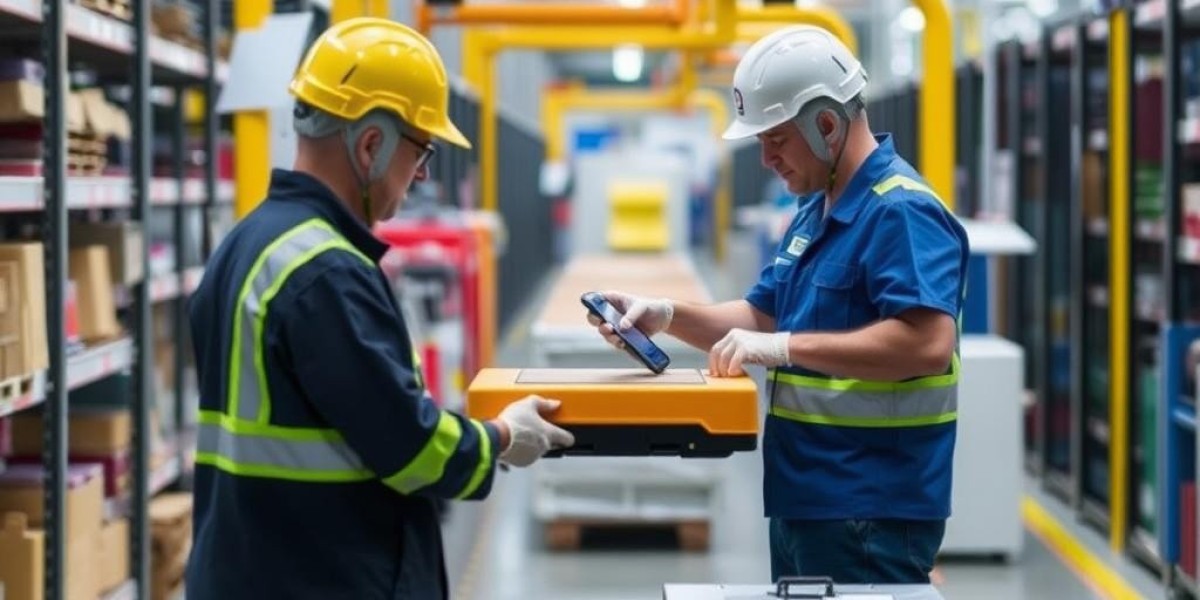Introduction
Real-Time Location Systems (RTLS) have become a game-changer in the manufacturing industry. They offer a technological solution that enables businesses to track assets, employees, and machinery in real-time, ensuring smoother operations and increased efficiency. But how exactly does RTLS work, and why is it so crucial for modern manufacturing?
How RTLS Works in Manufacturing
Overview of RTLS Technology
RTLS technology enables the tracking of physical items within a facility by using tags or sensors to determine their precise location in real-time. RTLS utilizes various technologies such as Radio Frequency Identification (RFID), GPS, and Ultra-Wideband (UWB), depending on the specific needs of the manufacturing environment.
Common RTLS Technologies Used in Manufacturing
Manufacturing facilities often implement a combination of RTLS technologies to cover different operational needs. For instance, RFID tags are commonly used for tracking raw materials, while GPS may be deployed for outdoor monitoring of vehicles and large equipment. UWB offers highly accurate indoor tracking of equipment and personnel.
The Role of RTLS in Tracking Assets
Real-Time Asset Tracking and Management
One of the most significant benefits of RTLS is its ability to provide real-time visibility into asset locations. In a large facility, knowing exactly where machinery, tools, or products are can prevent production bottlenecks and reduce downtime.
Benefits of Asset Visibility
Asset visibility through RTLS eliminates the time wasted searching for misplaced items, ultimately increasing productivity. It also allows for better inventory control, reducing excess stock and avoiding unnecessary purchases.
RTLS for Workforce Management
Tracking Employee Movement and Productivity
RTLS can monitor employee movements, providing data on how staff are navigating the facility. This insight helps optimize workflows and identify areas where productivity can be improved.
Enhancing Workplace Safety with RTLS
In addition to improving productivity, RTLS contributes to workplace safety by tracking employees in hazardous areas. If an incident occurs, the system can immediately alert supervisors and direct emergency responders to the exact location.
RTLS and Equipment Monitoring
Real-Time Monitoring of Machinery and Equipment
RTLS technology helps monitor the performance of equipment in real-time. If machinery is operating below efficiency, alerts can be sent, allowing for immediate corrective action.
Predictive Maintenance Enabled by RTLS
By tracking usage patterns, RTLS enables predictive maintenance, allowing manufacturers to address issues before they lead to costly downtime. This proactive approach helps extend the life of machinery and minimize disruptions.
Streamlining Production with RTLS
Reducing Production Delays
Real time location system manufacturing can track the movement of goods through the production process in real-time, reducing delays and identifying areas where processes can be streamlined.
Optimizing Workflow and Production Lines
RTLS provides valuable data that can be used to optimize workflows, ensuring that resources are allocated more effectively. For instance, if one production line is operating slower than others, adjustments can be made to balance the load.
RTLS and Inventory Management
Real-Time Inventory Tracking
Inventory management becomes significantly easier with RTLS, which provides real-time data on stock levels. This level of insight allows manufacturers to avoid stockouts and overstocking, optimizing their inventory management processes.
Automating Supply Chain Operations
RTLS enables the automation of various supply chain processes, from receiving raw materials to shipping finished goods. This automation reduces human error and ensures that operations run smoothly.
Improving Quality Control with RTLS
Monitoring Product Quality in Real-Time
RTLS can also play a role in quality control by monitoring products as they move through the production process. Any deviation from quality standards can be immediately flagged.
RTLS for Early Error Detection
Early detection of defects or errors is critical in maintaining product quality. RTLS allows for immediate action, preventing defective products from reaching customers.
Enhancing Security with RTLS
Preventing Unauthorized Access
Manufacturing facilities often house valuable equipment and sensitive data. RTLS can be used to prevent unauthorized access to restricted areas by tracking personnel and assets in real-time.
Securing Critical Assets and Materials
RTLS can track the movement of critical assets and materials, ensuring that they are only accessed by authorized personnel, adding an extra layer of security to the facility.
Data Collection and Analytics with RTLS
Leveraging RTLS Data for Better Decision-Making
RTLS generates a significant amount of data that can be used to make informed decisions. This data helps in understanding how resources are used and identifying areas for improvement.
Integrating RTLS with IoT and AI
When combined with IoT and AI, RTLS can create intelligent systems that automatically adjust operations based on real-time data. This integration paves the way for smarter manufacturing processes.
RTLS for Cost Reduction
Reducing Downtime and Waste
With predictive maintenance, real-time tracking, and improved workflows, manufacturers can significantly reduce downtime and waste, leading to substantial cost savings.
Increasing Overall Operational Efficiency
RTLS optimizes nearly every aspect of manufacturing, from asset tracking to employee management. These improvements lead to enhanced operational efficiency and a more profitable business model.
Case Study: RTLS in a Modern Manufacturing Facility
A Real-World Example of RTLS Implementation
In a modern automotive manufacturing plant, RTLS was implemented to track the movement of vehicles, parts, and workers throughout the facility. The system drastically reduced delays, improved workflow, and minimized waste, resulting in a 15% increase in overall efficiency.
Results and Key Takeaways
The success of RTLS in this facility highlights its potential to revolutionize manufacturing operations. Improved asset visibility, better workforce management, and predictive maintenance were among the most significant benefits.
Challenges and Limitations of RTLS in Manufacturing
Implementation Challenges
While RTLS offers numerous benefits, its implementation can be challenging. Costs, compatibility with existing systems, and the need for extensive infrastructure can be barriers to adoption.
Limitations of RTLS Technology
RTLS accuracy depends on the technology used and the environment in which it operates. Interference, range limitations, and technical issues can affect the effectiveness of the system.
Future Trends in RTLS for Manufacturing
The Role of AI and Machine Learning
As RTLS technology evolves, the integration of AI and machine learning will enable even more intelligent manufacturing systems that can predict and adjust to operational changes automatically.
RTLS in Industry 4.0 and Beyond
RTLS is expected to play a significant role in Industry 4.0, where interconnected systems will drive fully automated, smart factories of the future.
Conclusion
RTLS is transforming the manufacturing industry by providing real-time data, improving operational efficiency, and enabling smarter decision-making. As technology continues to evolve, its role in the future of manufacturing will only grow.









